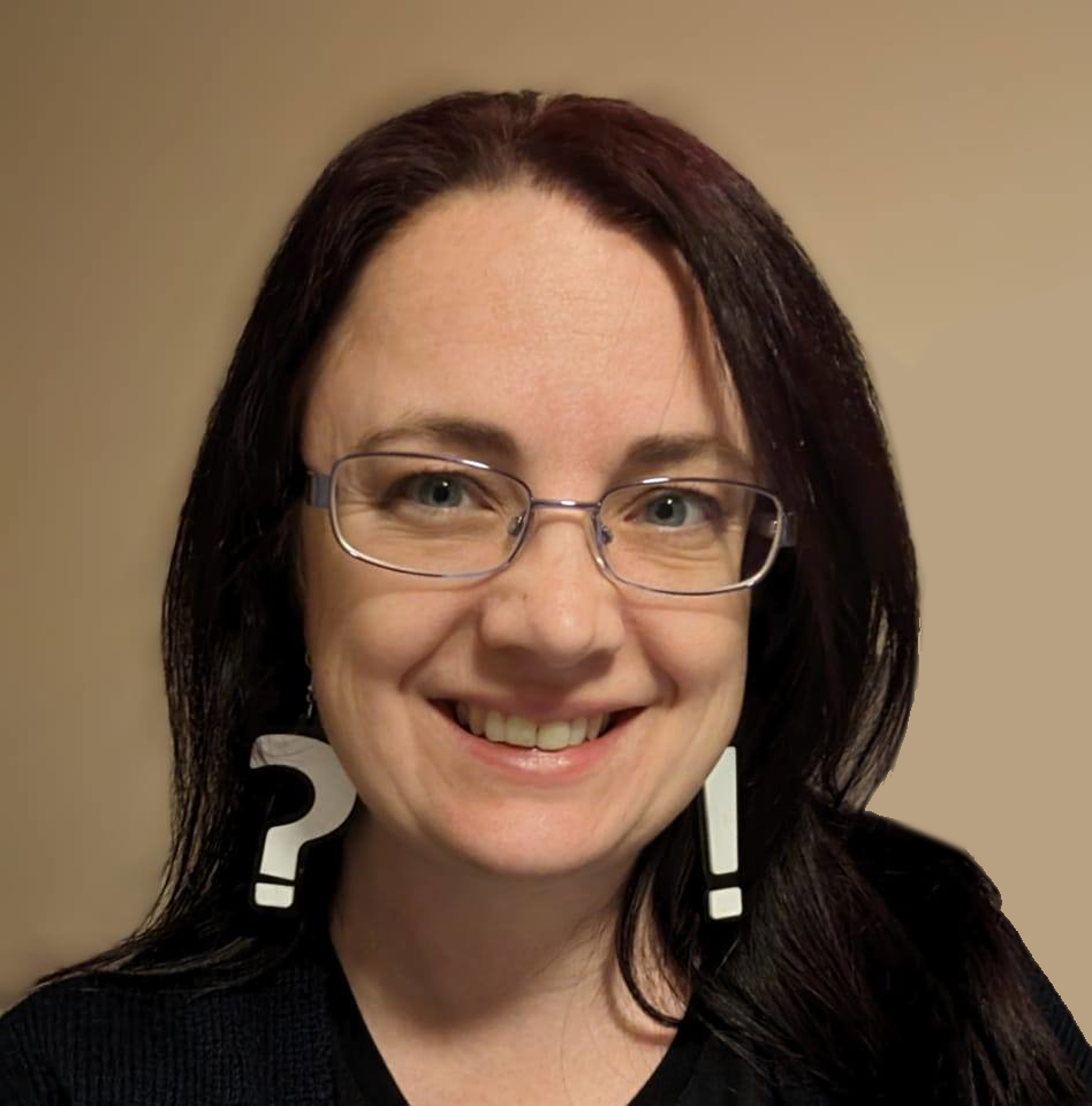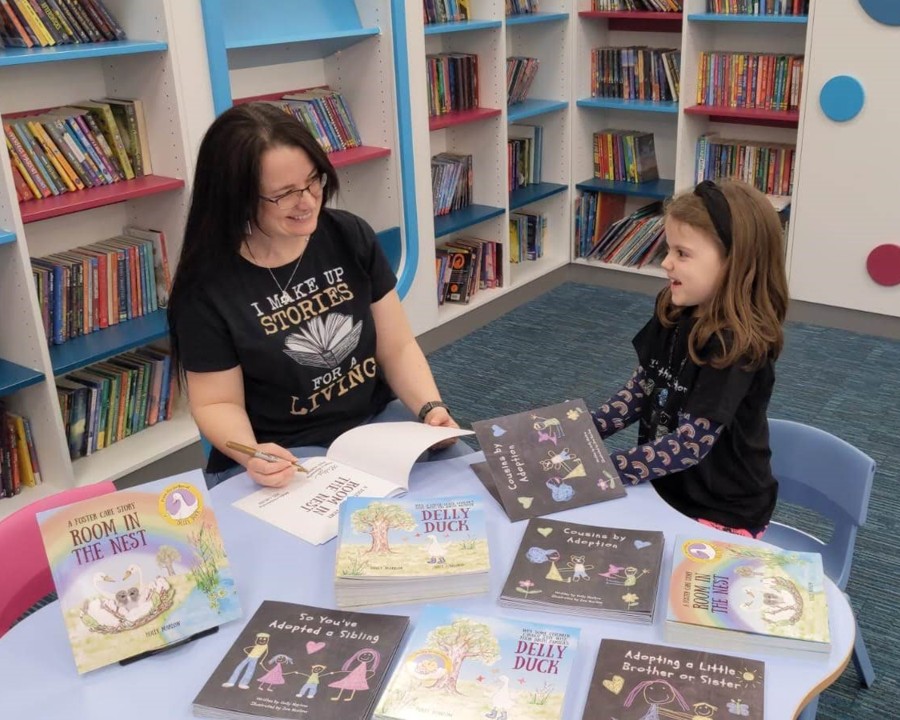When children face big changes, stories can offer comfort and clarity. In this interview, author and adoptive parent Holly Marlow shares how her books—rooted in lived experience—open up gentle, meaningful conversations about foster care, kinship care, and adoption. Her creative use of animal characters and metaphors helps children explore difficult questions in a safe and relatable way.
“Story time is one of the more comfortable times to have conversations about emotional topics… Eye contact can feel a bit much for children (and adults!) while they’re trying to process big feelings.“
Holly Marlow, Author

Today we meet Holly Marlow, an adoptive parent and author
An interview with Holly Marlow – an adoptive parent who creates children’s books to help children to understand foster care, kinship care and adoption. In this interview, Holly explains how her books can be used to talk to children about their experiences in foster care.

How did you get into writing children’s books about foster care, kinship care and adoption?
My husband and I have a biological daughter, Zoe, and an adopted son, Jake. Zoe was four years old when we adopted Jake, and she asked a lot of questions about fostering and adoption, but the one that she struggled with the most was “why can’t some children stay with their birth families?” I wanted to make sure I answered that question in a child-appropriate way. We’ve used books to discuss sensitive topics and introduce new ideas before, so I decided to create my own story to help her to understand. Seeing how the story helped Zoe to understand adoption, I realised the story could help other families too.
Can you share how your first book, Delly Duck, can be used to explain why some children can’t stay with their birth parents?
Delly Duck uses metaphors, so that the adult reading the story can help the child to draw connections between the story and their personal experiences. The birth mother, Delly, keeps chasing butterflies and leaving her egg (and, later, her duckling) unattended. Chasing butterflies can be a metaphor for an addiction, poor priorities, or memory and concentration problems that birth parents might have for a variety of reasons – health issues, learning disabilities or their own traumatic childhood. The reader can interpret the story in the most appropriate way for the child they are reading it with. The social worker character, Caring Goose, has concerns that Delly isn’t caring for her egg properly even before it hatches, which can be a metaphor for any concerns that social workers or others had even before the child was born.
I also wanted to reassure children that these decisions aren’t made lightly. Caring Goose intervenes multiple times and tries to help Delly Duck to make a safe nest, but it becomes clear that sadly Delly is not going to make significant enough changes to safely parent her child.
The duckling is taken to live with a foster family, while Caring Goose looks for the right family to love them and look after them. Caring Goose finds a kind duck called Quill, who becomes the duckling’s family and can represent an adoptive family, a kinship family or a long-term foster placement.
What led you to create your foster care story, Room in the Nest?
Some of Jake’s foster siblings went into kinship placements or stayed in long term foster care, and we have been fortunate enough to be able to keep in touch with them and preserve those special relationships. Jake had a few questions about why they weren’t all adopted like him, so I realised it was time for another story!
Room in the Nest features a few of the characters introduced in Delly Duck, along with a lot of new birds, to show various possible outcomes from foster care – reunification, kinship care, adoption or long-term foster care. I took the opportunity to show lots of different family structures, including a single-parent family, and a stork-flamingo family, which has same-sex parents and a child who looks physically different than her parents, so that lots of children can see similarities to their own families and appreciate that families come in all different shapes and sizes!
How can foster carers explain foster care to their biological children, or to nephews, nieces and other young children who aren’t part of their immediate family, but might ask tricky questions?
As well as using stories to normalise different families and to explain possible outcomes, I always try to have a straightforward chat when something significant is happening, and I tell the child that they can ask me questions at any time. I find that story time is one of the more comfortable times to have conversations about emotional topics.
It helps that you’re both looking at a book. Eye contact can feel a bit much for children (and adults!) while they’re trying to process big feelings!
Depending on the age and understanding of the child, it can be helpful to read a story before questions arise, then you can refer back to it in the context of something. One of my son’s friends asked me why he didn’t live with his birth parents, and I didn’t feel comfortable sharing details of my son’s story before he is really old enough to decide which details he wants to share with his friends.
I knew they already had a copy of Delly Duck, so I was able to say “I don’t want to talk about Jake’s birth parents specifically, but there are lots of reasons why children need to be adopted – remember in the Delly Duck story when…” and then give some examples of things Delly did that showed she couldn’t keep her child safe.
I have since read the story to other young family friends, who had innocently assumed that his birth parents “gave him away, because they didn’t want to be parents.” I am yet to meet a family where that is what happened! Referring to the story has made it easier to dispel some myths that might upset my son (or any other care-experienced children who hear them!) without sharing my son’s personal experience.
I’d also recommend using role play with little ones who are trying to figure out what different family structures mean. My son processed a lot of his story with dinosaur figurines, and when I’m roped into role play games, they often feature foster care or adoption.
Do you have more stories planned to help children to understand foster care?
I’m just putting the finishing touches on Still in the Family Tree, which is about the experiences of some magpie chicks who start off living with their parents, but end up living with their grandparents. They were one of the families in Room in the Nest and I’ve had an overwhelming number of requests to give the magpies their own story, to help explain kinship care in more depth. I’m also planning to write some stories to help children with attachment difficulties and dysregulation.
Holly’s children’s books are available on Amazon. To find out more about Holly or her books, visit www.hollymarlow.com.
Interested in starting your fostering journey?
Get in touch with one of our experienced, friendly team to discuss your potential future as a foster carer…
